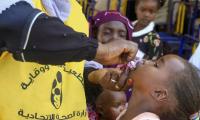Ahead of the 2024 general elections, the Pakistan Muslim League Nawaz (PML-N) pledged a comprehensive package of economic, administrative, and social reforms, focusing on economic revival, governance improvements, energy sustainability and social welfare.
A year into its tenure, the government has made tangible progress in some areas while continuing to face challenges in others. Here’s a closer look.
On the macroeconomic front, signs of stabilisation are evident. One of the PML-N’s key promises was to curb inflation and stabilise the currency – an urgent priority for a public weary of soaring prices and economic volatility. The government acted swiftly, securing an IMF Extended Fund Facility (EFF) and adhering to its conditions, even at the expense of political capital.
The impact is clear: the exchange rate has stabilised, foreign exchange reserves have nearly doubled – from $8.2 billion in January 2024 to $15.9 billion by mid-February 2025 – and headline inflation, including energy and food prices, has dropped from 23 per cent in February 2024 to just 5.0 per cent in January 2025. Not just that: interest rates have been reduced from 23 per cent to approximately 11 per cent.
In the energy sector, the PML-N had promised to ‘power progress’ through affordable and sustainable electricity. It pledged to cut electricity bills by 20-30 per cent, provide subsidies for farmers and low-income households, launch a nationwide 10,000MW solar initiative, lower generation costs, eliminate circular debt, privatise distribution companies (DISCOs) and transition toward a competitive energy market.
Some of those promises were conflicting in nature. For instance, electricity cannot be made affordable (tariff reduction, subsidies, or even the adoption of solarisation at a mass scale) without first addressing the underlying structural issues: circular debt, capacity payments, a fragile transmission network, and power sector governance issues.
Consequently, while consumers remain burdened by high electricity prices, the government has taken significant steps under the IMF programme to reform the power sector. By recovering the full cost of generation from consumers, phasing out subsidies, and renegotiating power purchase agreements with independent power producers, it aims to reduce circular debt and eliminate crippling capacity payments.
The plans to privatise DISCOs and create a competitive energy market are also steps in the right direction – but the road ahead remains steep. The government should aim to implement extensive power sector reforms within the first three years of its tenure to fulfil its promise of providing affordable and sustainable electricity in its final two years.
Agriculture, a provincial subject, was another area where the PML-N made ambitious promises – interest-free loans for small farmers, solar-powered tube wells, an expanded PM Kissan package, better seed quality, improved crop yields, incentives for corporate farming and wider adoption of modern irrigation techniques to name few. In Punjab, the PML-N government has already launched several of these initiatives, supported by the Special Investment Facilitation Council (SIFC), which is introducing smart agriculture techniques in the Cholistan and Thal regions.
However, these interventions, much like past efforts of successive governments, fall short of transforming Pakistan’s agriculture into a climate-resilient and high-yield sector. The government’s push for tube well solarisation, for instance, risks worsening Punjab’s water crisis unless paired with a shift away from inefficient flood irrigation. A similar misstep occurred in Balochistan decades ago, where flat electricity rates for agricultural tube-wells contributed to unsustainable groundwater depletion.
One of the PML-N’s electoral promises was to build a climate-resilient Pakistan using the 4RF framework – Resilient Recovery, Rehabilitation, and Reconstruction. The proposed interventions range from improving disaster management planning and launching a carbon credit policy to restoring biodiversity, protecting forests, reducing smog, enhancing air quality, banning plastic bags, and modernising brick kilns. Some of these initiatives require new policies and regulations, others demand stricter enforcement of existing laws, and many hinge on widespread behavioural shifts.
The good news is that the PML-N government in Punjab has taken concrete steps to reduce smog and curb air pollution. At the federal level too, climate policy has gained momentum with the launch of a carbon pricing policy and key initiatives like Global Shield (climate risk transfer), Living Indus (ecosystem restoration), and GLOF (glacial outburst flood mitigation). Pakistan’s climate commitments (NDC 3) are also being updated, marking a significant shift by setting carbon reduction targets at the provincial level for the first time.
However, achieving true climate resilience requires more than policy interventions – it demands a fundamental shift in governance. A whole-of-government approach is essential, integrating climate considerations into broader economic and development planning.
Countries like Germany have merged their economy and climate ministries, recognising that sustainability and economic policy must go hand in hand. The PML-N-led government should prioritise institutional alignment and systemic reforms to ensure climate action remains at the core of its agenda throughout its tenure.
The bad news is that on several key promises, the PML-N government is falling behind. Nowhere is this more evident than in its commitment to strengthening financial and administrative reforms in local government – an objective that remains unattainable without holding local elections in Punjab and Islamabad.
Other unfulfilled pledges include abolishing NAB, restoring Articles 62 and 63 to their original form, increasing health and education spending as a percentage of GDP, launching a new labour policy and accelerating digital transformation. No attempts have been made to achieve ambitious goals like turning federal and provincial capitals into wifi cities, bringing major online payment gateways to Pakistan and modernising the police force, etc.
In 2024, the PML-N made many ambitious promises for delivery over the next five years. For example, regarding inclusive growth, it promised to raise the tax-to-GDP ratio by 13.5 per cent, the investment-to-GDP ratio by 18 per cent, the savings-to-GDP ratio by 17 per cent, per capita income to $2,000, annual exports to $60 billion and to reduce poverty to under 25 per cent.
However, with each passing month, these goals risk becoming increasingly unattainable – much like chasing a daunting total in a one-day cricket match after a sluggish start. To stay on track, the government must translate its five-year vision into clear annual benchmarks to ensure steady progress.
Regardless of what the PML-N has achieved in its first year or what it accomplishes in the next four, its success will ultimately be judged by its ability to improve people’s daily economic realities. A stable currency and lower inflation are important milestones, but their true impact will be measured by rising wages, job creation and expanded economic opportunities.
Encouragingly, the groundwork for recovery has been laid. Now, the government must shift its focus toward inclusive growth that benefits businesses, workers, and households alike.
If macroeconomic stability translates into higher incomes and greater financial security, many voters will overlook the government’s shortcomings. The opportunity is there – is the PML-N ready to seize it?
The writer heads the Sustainable Development Policy Institute (SDPI) and is a member of the advisory board of the Asian Development Bank Institute.
He tweets/posts @abidsuleri
Critics argue that strategy is vague, but closer look indicates strategic alignment with global trends and national...
To defeat it, we must distrust bot-driven narratives, to defeat it, we must verify sources before believing or sharing
Too often in emerging markets, digital innovation is treated as standalone goal, with risk relegated to afterthought
As in Pakistan lawfare’s impact and prevalence are increasing, situation is turning murkier
Number of traditions are associated with Eid, such as new clothes and giving and receiving of cash gifts as Eidi
Internationally, there have been misleading theories propounded about so-called slowing of Chinese economy







